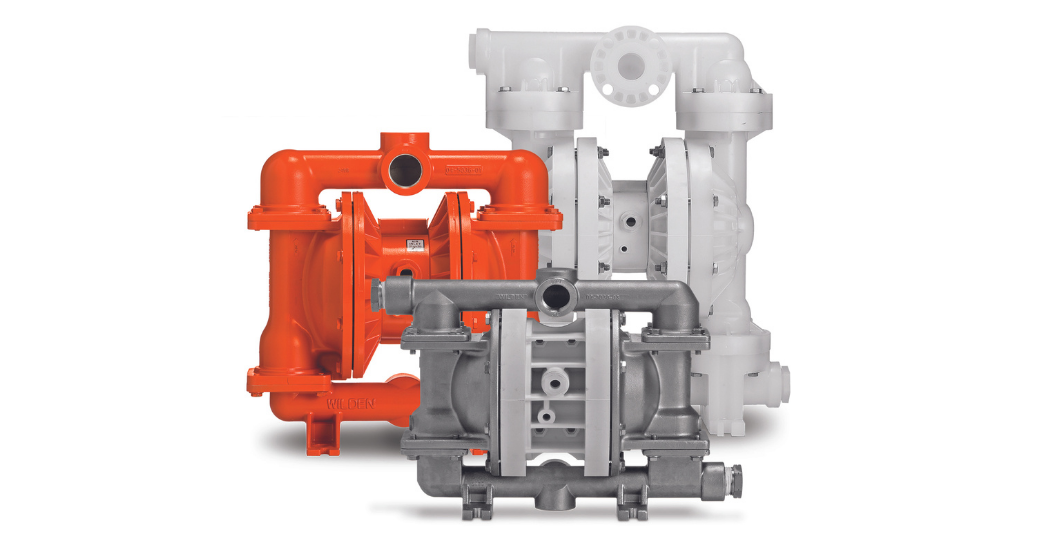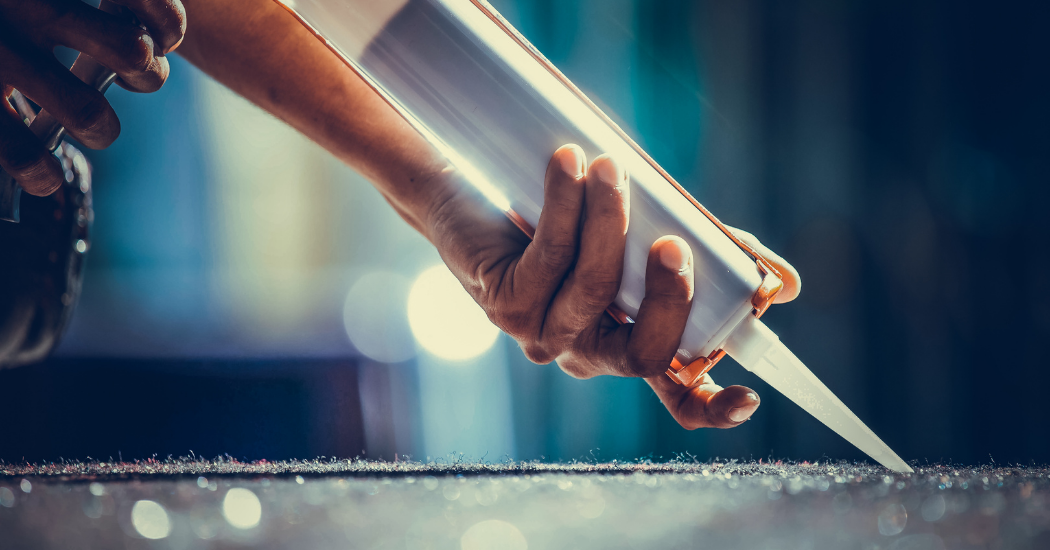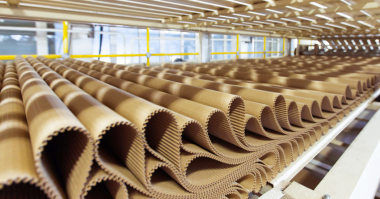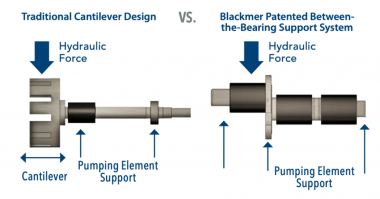Wilden® Chem-Fuse Diaphragms have been designed to meet the pumping challenges inherent in the sticky and viscous materials that are the foundation of adhesive and coating manufacturing
By James Farley
It’s simple: without adhesives, the world would literally fall apart. They are utilized in almost every industry in the world and in the manufacture of millions of unique products, with the highest concentration in the packaging, automotive, electronics, building and construction, home goods, textiles, and transportation markets.
A key component in the adhesive production chain is the pumps that are used to transfer raw materials and finished products. Traditionally, the adhesive-manufacturing process has been chemical-intensive, with a roster of solvents, catalysts, and resins combined together in order to create the finished adhesive product.
What this all means is that the pumps that are used to facilitate the adhesive-production process must be versatile, reliable, and robust enough to handle liquids of many different types and structures, including those that may be corrosive, abrasive, or hazardous. This white paper will illustrate how positive displacement air-operated double-diaphragm (AODD) pumps – especially those that are outfitted with next-generation diaphragm-design technologies – possess the operational and compatibility capabilities to be the No. 1 choice for use in the manufacture of the adhesives that help keep the world in one piece.

The new Chem-Fuse Integral Piston Diaphragm (IPD) from Wilden® reduces the risk that damaging product buildup will occur in AODD pumps through a design that encases the diaphragm’s outer piston within the diaphragm material itself.
The Challenge
The main challenge, as it ever has been, in manufacturing adhesives – whether the process is water-based, solvent-based, or hot melt – is the fact that they are sticky, viscous liquids, no matter the materials. In other words, the “adhesiveness” of adhesives can make them particularly difficult to produce.
This challenge can be a truly visceral one for operators and maintenance teams as chemical adhesives (along with some technically non-adhesive products such as latex paint) can form a buildup, known as “skins,” on the pump’s internal passages and components. This buildup is particularly common on the outer piston of traditional diaphragm designs – which require an inner and outer piston to hold the diaphragm in place. The outer piston inherently has added surface area and space for buildup to occur. This buildup – especially when it occurs on the outer piston of a standard diaphragm in an AODD pump – can cause problems in several ways:
- Can slough off into the product stream where these bits of hardened adhesive will clog filters, pipes, etc.
- Can slough off and get stuck in the pump itself, which will minimally reduce overall performance and potentially cause the pump to stall • Smaller internal clearances related to the buildup can lead to premature wear
- Can remain attached to the outer piston, with the growing buildup damaging the pump’s liquid chamber
- The results of buildup issues are these:
- Increased maintenance, cleaning, and ultimately, repair of wear components; in AODD pumps, this means the balls, seats, and diaphragms that are integral to the pumping process
- Increased downtime as the pump is taken offline for cleaning and maintenance; this will make meeting strict production schedules much more difficult
Operators and/or maintenance teams can often take the brunt of the true challenge of removing the adhesive buildup from process equipment and pumps. In many cases, the only way to remove the buildup is with the use of a hammer and chisel; in facilities where the use of hazardous materials means the operation must be entirely explosion-proof, no power tools can be used, which means the hammer-and-chisel method is the only method available for adhesive-buildup removal.
This is not only personally frustrating for whoever is charged with removing the buildup, but, in the worst-case scenario, the only possible outcome may be to simply replace the old pump with a new one, which can harm the operation from a financial perspective.
The ultimate downside to adhesive manufacture, no matter the pump technology being used, is the fact that all of the operation-hampering scenarios that result from product buildup will eventually combine to result in pump failure. This will not only lead to excessive replacement costs, but if a product leak occurs it can compromise operational safety, as well as the safety of site personnel, surrounding communities, and the environment.

The performance, safety and reliability of the 1″; to 3″; models of metal and plastic bolted Wilden® Pro-Flo® and Pro-Flo® SHIFT AODD Pumps can be improved through the use of Chem-Fuse IPDs.
The Solution
Realizing the deleterious affects that adhesive buildup can have on the operation and reliability of traditional two-piece AODD pump diaphragm designs, Wilden® offers its new Chem-Fuse Diaphragm. This diaphragm has an innovative one-piece Integral Piston Diaphragm (IPD) design that encases the outer piston within the diaphragm material itself. That material – typically Wil-flex™, which is constructed of Santoprene® – dramatically reduces the potential for any product buildup to occur during normal operation. Wil-Flex also benefits the operator through its excellent flex life, high chemical and abrasion resistance, and durability, which leads to longer service life with lower maintenance and replacement costs.
In effect, design of the Chem-Fuse diaphragm takes the stickiness, high viscosity, and product-buildup concerns that are common in the transfer of adhesives and makes them irrelevant. This also serves to makes them easier to clean than traditional diaphragm models, therefore, enhancing the speed of product changeovers, saving time and money. Finally, the IPD design eliminates a potential leak point around the outer piston and the failure-causing abrasion points at the outer piston, extending diaphragm life significantly.
What further differentiates the Chem-Fuse from other IPD designs on the market is that they utilize full-length shafts, which provide the same performance as the standard diaphragms. Other IPDs also require a shorter stroke, which gives them reduced flow and reduced suction-lift capabilities. This reduction is exacerbated when handling a very viscous fluid, which makes it more difficult and time-consuming to get the product into and then out of the pump. In sum, the design and operational abilities of Chem-Fuse IPDs allows operators to combine the benefits of reduced buildup with no sacrifice in the level of performance.
Chem-Fuse diaphragms are constructed, as mentioned, of Wilden’s Wil-Flex material, which makes them 50% less expensive than PTFE-laminate models, and compatible with Pro-Flo and Pro-Flo SHIFT 1” to 3” bolted metal and plastic pump models at operating temperatures ranging from -40ºF to 225ºF (-40ºC to 107ºC).
Conclusion
The world wouldn’t function properly without adhesives, and the producers of adhesives can’t function without the proper pumping technology. Wilden Pro-Flo and Po-Flo SHIFT AODD Pumps have proven to be a leading choice in adhesive-manufacturing applications, and their capabilities are enhanced further through the benefits that the new Chem-Fuse Diaphragms can offer, specifically as they relate to eliminating product internal buildup. While there is no guarantee that no product buildup, or skins, will ever occur, the design of the Chem-Fuse IPDs reduces greatly the chance of that occurrence when compared to other IPD designs.
The lack of product buildup also eliminates a major headache for operators, who no longer need to worry that their AODD Pumps will become fouled by this buildup or any part of it that may slough off into the product stream. The result is an upgraded AODD pump that is easier to use and maintain through the implementation of the best diaphragm technology available. This creates a safer, more efficient, and more reliable production process for one of the world’s most important products.
About the Author:
James Farley is the Product Management Director for Wilden®, Grand Terrace, CA, USA, a leading manufacturer of air-operated double-diaphragm (AODD) pumps. He can be reached at (909) 422-1700 or James.Farley@psgdover.com. Wilden is a product brand of PSG®, Oakbrook Terrace, IL, USA, a Dover company. PSG is comprised of several leading pump companies, including Abaque ™, All-Flo, Almatec ®, Blackmer ®, Ebsray®, em-tec, EnviroGear®, Griswold®, Hydro Systems, Mouvex®, Neptune™, Quantex™, Quattroflow™, RedScrew™, and Wilden®. You can find more information on Wilden at wildenpump.com and on PSG at psgdover.com.





Comments